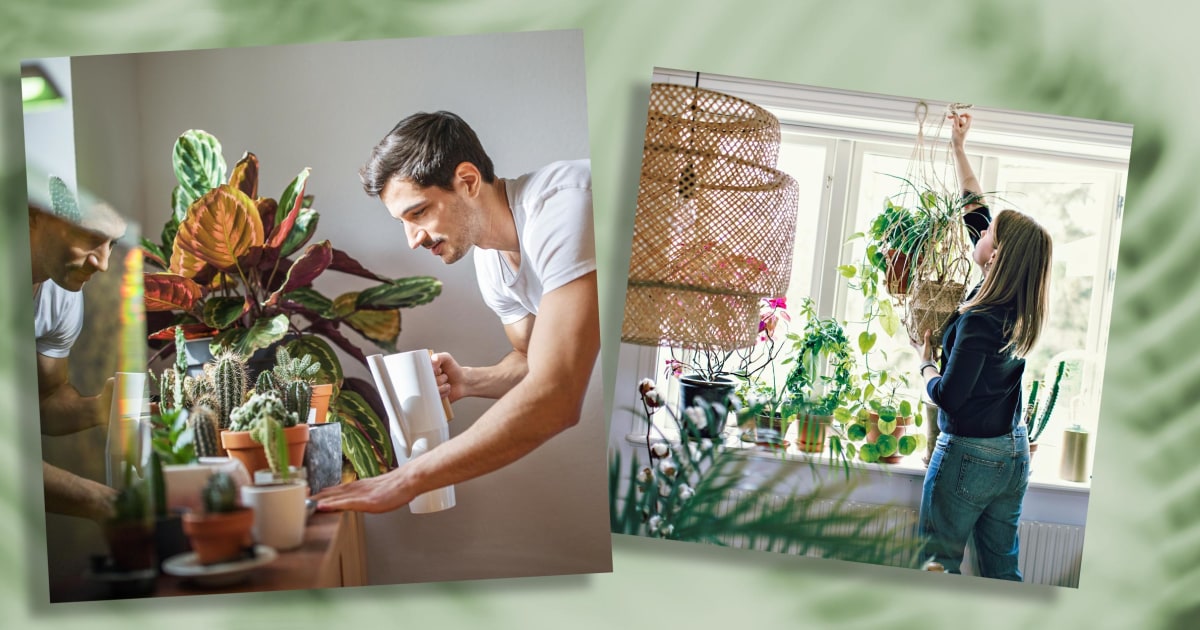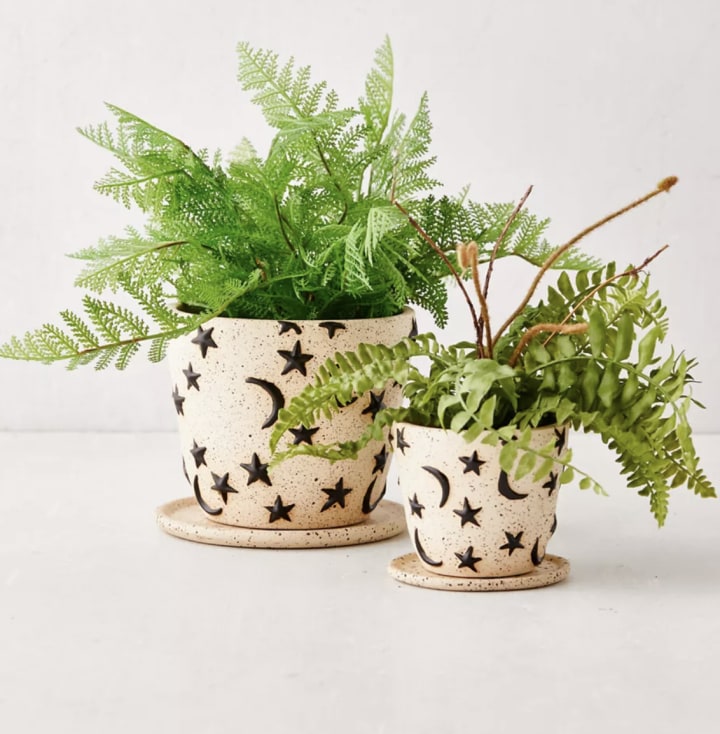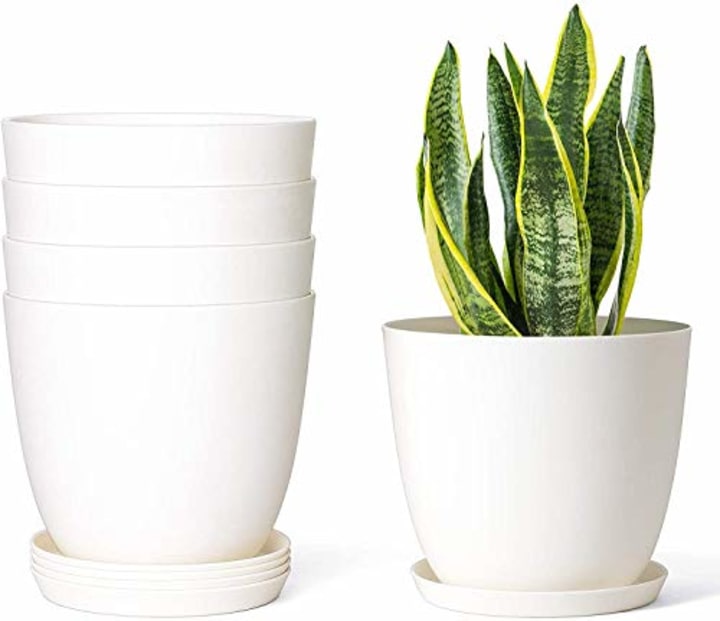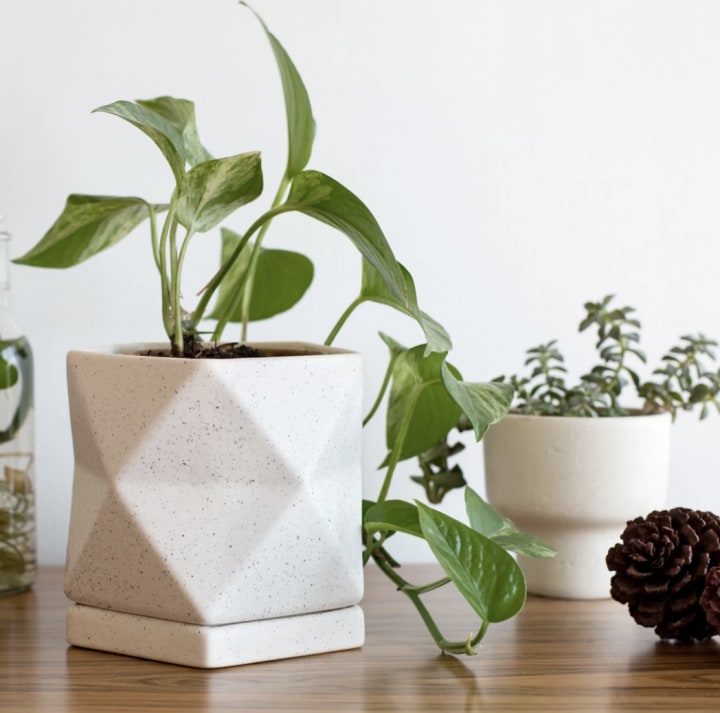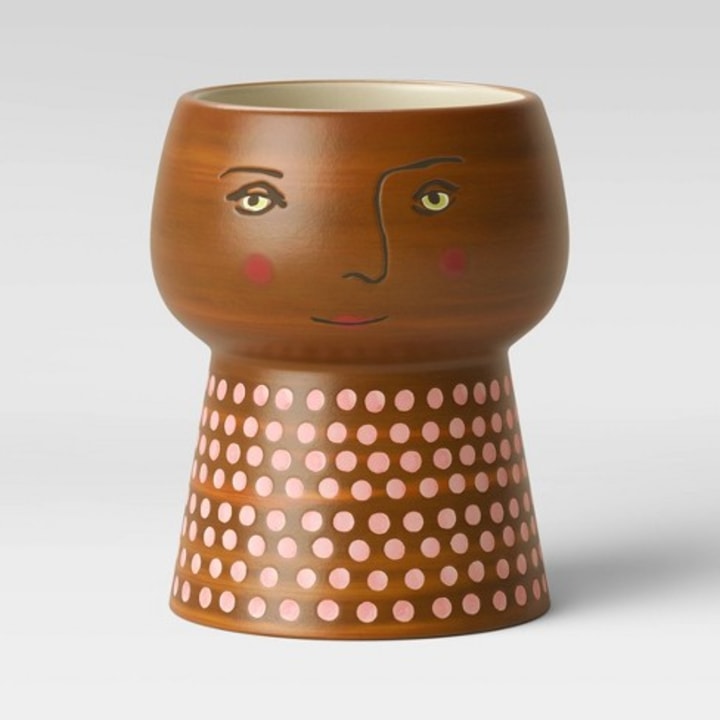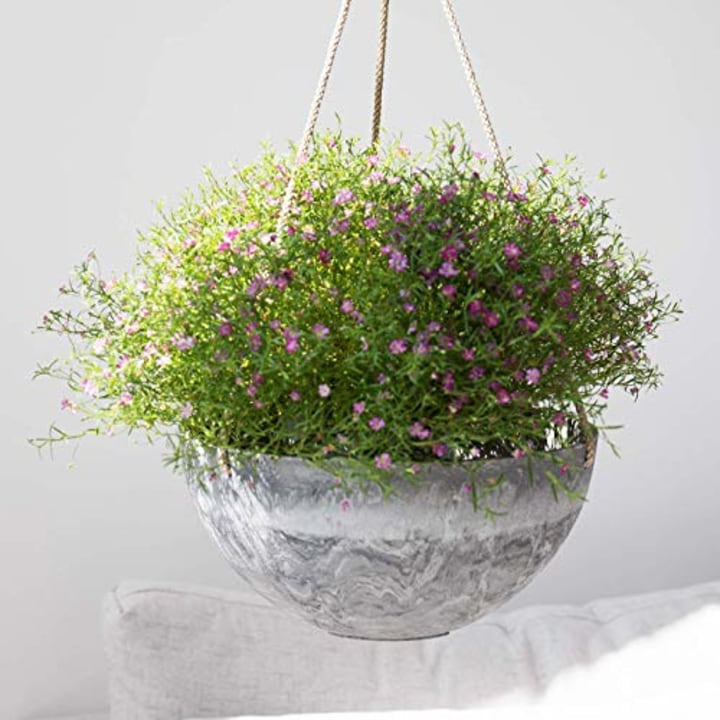When buying a planter, there’s more to consider than just how it looks. The type of pot you use for your indoor plants can determine how healthy — or unhealthy — they are, according to EJ Kaga, CEO of HomeGrown Garden, an online retailer that sells heirloom seeds and gardening kits. The material a pot is made from, how large it is and its drainage features all impact the plant and its health. And you also need to keep the type of plant you’re potting in mind, as different plants require different growing environments.
“Finding the ideal type of planter will depend on what you are growing, since this will affect how warm the pot is, and how well it drains water,” Kaga said. Once you find the right type of pot for your indoor plant, you can experiment with “colors and shapes that harmonize with the foliage colors and texture of the plant,” added Carmen DeVito, founder of Garden Cult, a garden and landscape design company.
Top-rated indoor pots and saucers
We spoke with experts about how to buy indoor pots and planters and rounded up some top-rated options based on their advice from brands like The Sill, Bloomscape and Terrain.
These planters boast a fluted silhouette and a ridged finish. They’re made from terracotta clay, which Terrain said may develop a weathered patina over time due to oxidation — you can restore its original finish with a vinegar solution. The planter comes with a pot, which has a drainage hole, and a saucer. It’s available in two sizes — Small (10 inches) and Large (12 inches) — and in two colors: Gray and Rose.
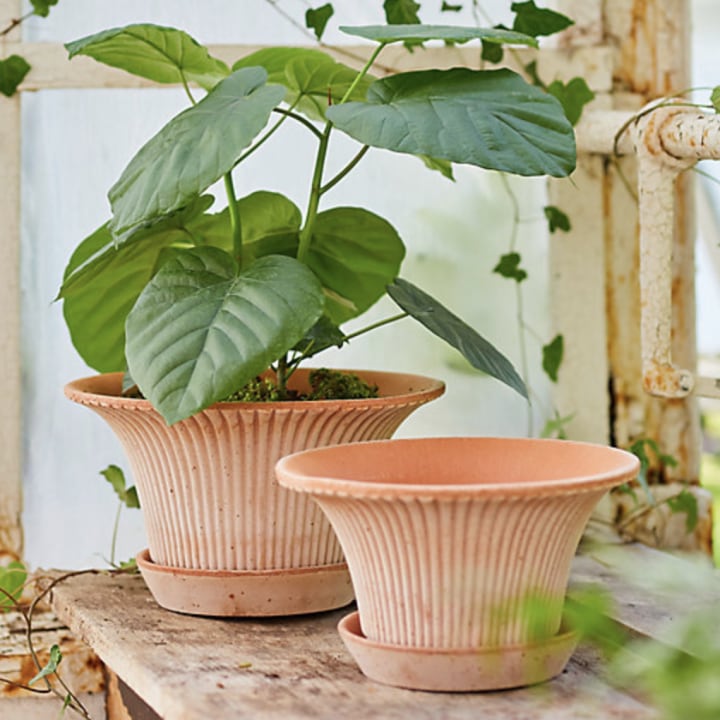
This simple planter is made from sand stoneware and is covered in an Ivory glaze. It comes with a matching dish and pot, which has a drainage hole. The planter is available in 4-inch and 6-inch sizes.
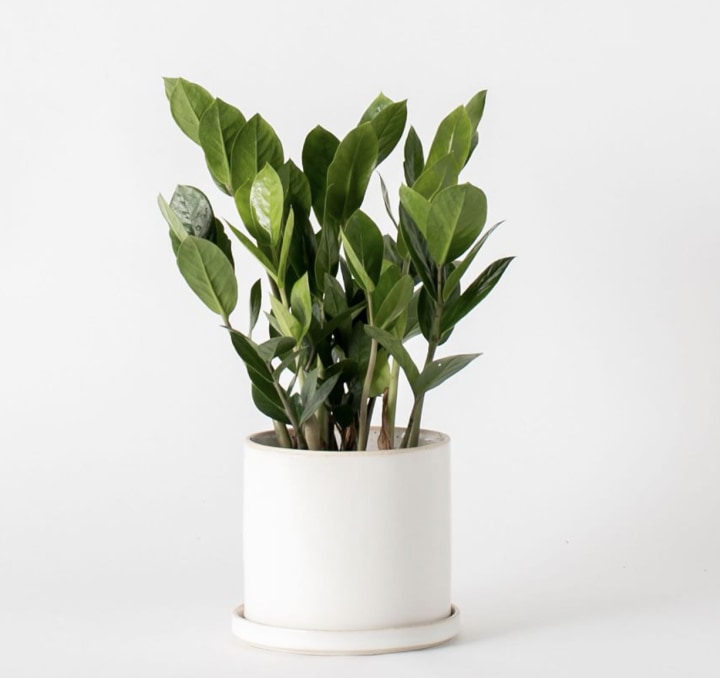
Decorated with stars and moons, this speckled ceramic planter comes with a matching pot and dish. The pot has a drainage hole, too. You can purchase the planter in two sizes: Small (4 inches) and Medium (6 inches).
This two-piece ceramic planter comes with a pot and a deep saucer that can be used to water plants from the bottom up. The pot features a drainage hole, too. Its exterior has an unfinished smooth texture, while the interior is glazed. It comes in four sizes: 4 inches, 6 inches, 8 inches and 10 inches.
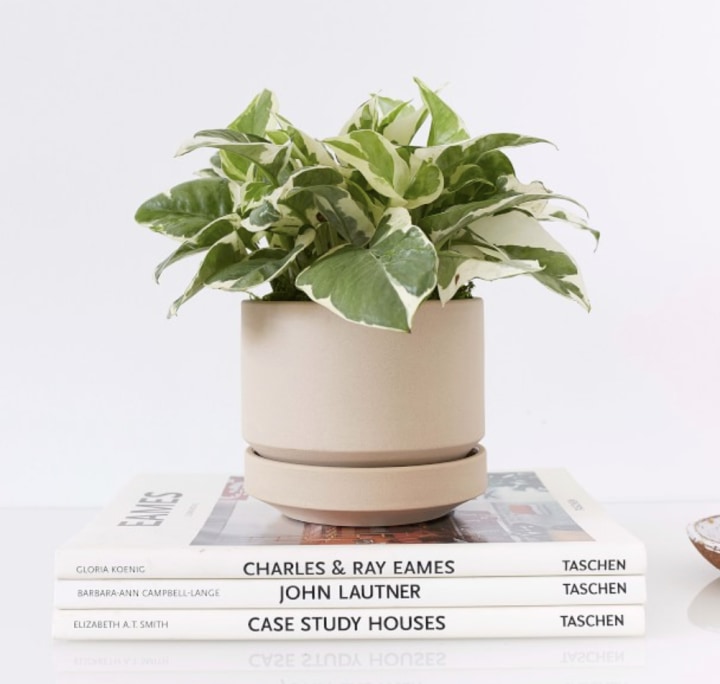
These terracotta pots are whitewashed to resemble rustic weathered patina. They feature a drainage hole and pair with Bloomist’s Basic Patina trays, which are sold separately. In addition to an inverted option — which is smaller at the top and wider at the bottom — the pots are available in sizes ranging from Small to XXX-Large.
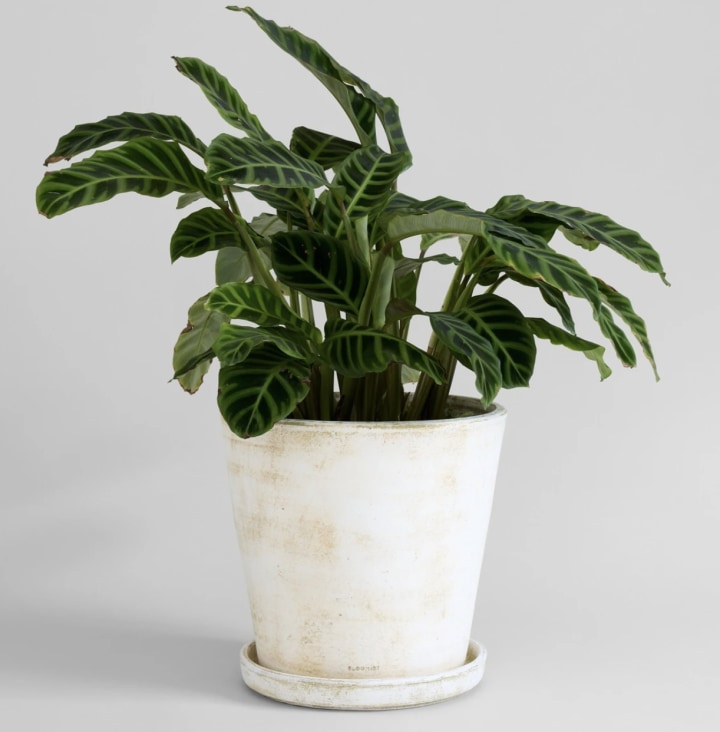
While you can use these plastic pots by themselves, you can also place them inside larger pots made from clay or terracotta, depending on the look you want to achieve. The pots feature drainage holes and each comes with its own saucer and rubber plug to block the drainage hole if necessary. They are available in three sizes — 5.5 inches, 6.5 inches and 7.5 inches — and six colors: Black, Blue, Cream White, Gray, Maccha and Multicolor.
Available in five colors — Aqua, Blue, Gray, Green and Cream — Smith & Hawken’s Earthenware Planter is designed with a built-in drainage hole and tray. It has a varied finish to highlight the planter’s different colors, textures and glossiness, and comes in 6- or 8-inch sizes.
The Sill’s Pentagonal Planter fits any plant in a 4-inch nursery pot. It’s made from ceramic and comes with a drainage hole and saucer. The planter is available in Terracotta and White Speckle.
The exterior of this curved planter features a painted face and dotted detailing, and it has a drainage hole at the bottom. It’s built from stoneware and has a flat round base so you can display it on shelves, tables or window sills. The planter comes in three sizes — 4, 6 and 8 inches — as well as three colors: White, Light Brown and Brown.
According to Kaga, hanging planters “offer the ideal planting environment. They’re easy to use, attractive and provide plants with plenty of room to sprawl out.” These hanging planters come in a set of two. Each one has four built-in drainage holes and comes with a rope hanger. You can purchase these hanging planters — which are made from recyclable plastic — in three styles: Marble Pattern, Rock Grey and White.
Elevate indoor plants by placing them on this saucer — it acts as both a hanging planter and a dish to catch water. Bloomscape says the hanging saucer is designed to hold 20 to 22 pounds and fits two small, one medium or a collection of extra small plants. It comes with wires that you can cut to your desired length, as well as a hook.The hanging saucer is made from 80 percent recycled plastic and is available in four colors: Stone, Clay, Charcoal and Slate.

If you want to house plants in pots that don’t come with a matching saucer to catch water, DeVito suggested purchasing small plates to put underneath. She said you can get creative with the design by using plates of different colors, materials and textures all while protecting your furniture and floors from water. Magnolia’s Hand-Thrown Saucer comes in White Terracotta or Terracotta. It features a rim around the edge and a 4-inch base to place pots.
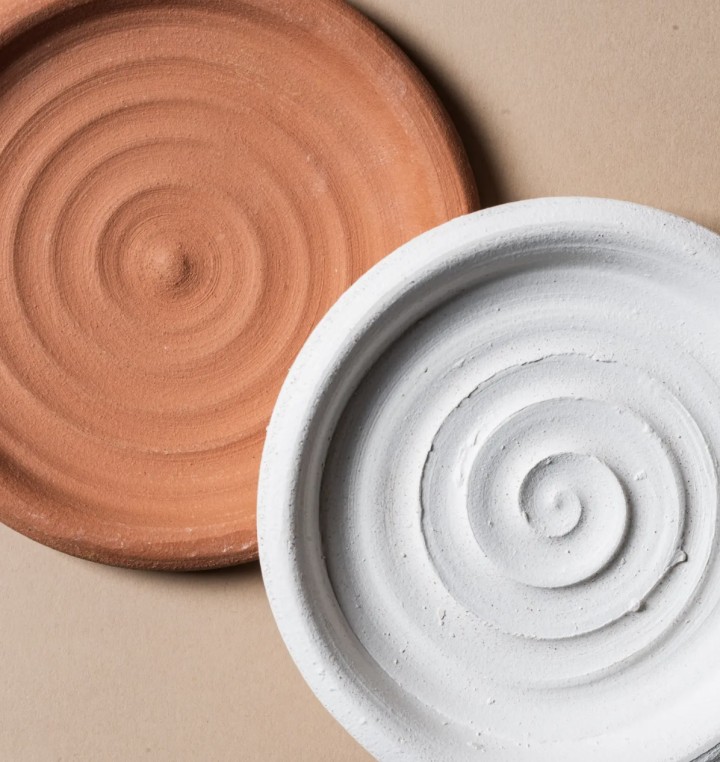
What to consider before buying an indoor pot
When shopping for an indoor pot, it’s tempting to purchase one based on aesthetics. But the experts we interviewed noted a few factors you should consider beyond what a pot looks like, like the material it’s made from and its drainage features. They also recommended thinking about what type of pot works best for the specific plant you’re growing.
Material
As long as you’re aware of how a pot’s material impacts the plant it holds, Kaga said you can use any type of planter. But factors like how much water a pot absorbs or how much heat it retains may require you to adjust your watering schedule. Overall, Kaga said he prefers plastic and ceramic when it comes to picking a material for your indoor pot due to their versatility.
Plants sensitive to overwatering grow especially well in ceramic pots, Kaga noted. Ceramic pots are porous, making plants less likely to suffer from root rot since the pot absorbs water. You may have to water plants in ceramic pots more often, however. Plastic pots, meanwhile, are lightweight, and they’re both less likely to break and easier to clean than ceramic pots. Soil tends to dry out slowly in plastic pots — Kaga said this is beneficial to gardeners who have a tendency to forget to water, but it’s not ideal for someone who tends to overwater.
Other preferable materials include clay, metal, fiberglass, wood and stone, according to Kaga. He also mentioned that terracotta pots are common and stylish, though he said they can overheat easily since the material retains heat over time.
Size and repotting
“The general rule of thumb is to select a pot that’s one size larger than the size of your plant. This is typically about 1 to 2 inches larger on average,” Kaga said. He recommended starting with a smaller pot and moving the plant to a larger one as it grows — the same advice applies to growing seedlings and houseplant cuttings. When you repot your plant, DeVito said you should choose a pot that’s 1 or 2 inches wider and deeper than the previous one, or 3 to 4 inches wider and deeper for larger plants.
Depending on how large it grows, some plants can stay in the same pot for years. But DeVito said you may also need to repot your plant if you can see its roots sticking out from the bottom, or if it dries out quickly after you water it. Kaga also said to be aware of mold or an odor developing, and to check for a large mass of roots replacing soil at the top of the pot — these are all signs your plant needs to be repotted.
Drainage
Drainage is one of the most important factors to consider when purchasing indoor pots. DeVito said a lack of drainage puts plants at risk of staying wet for a long period of time — “too much water is just as harmful to plants as too little,” she said.
As a rule of thumb, Kaga said that “all indoor pots should have holes at the bottom, even if you’re growing plants that love to be grown in wetter soils.” He noted that using pots with drainage holes at the bottom is the best way to grow indoor plants. “The purpose of the holes is to allow extra water to drain out the bottom of the pots after watering,” he explained. “This makes sure water doesn’t gather at the base of the pot, which can cause plant roots to rot or fungus and bacteria to proliferate.”
You can still use planters without holes, however. These are called cachepots, and DeVito said it’s possible to add a drainage mechanism to them. One way to do this is by putting a layer of gravel at the bottom of the cachepot and putting the plant itself in a plastic pot with a hole at the bottom. Then, place the plastic pot inside the cachepot over the gravel, and add Spanish moss or sheet moss on top to hide the plastic pot. You can also add gravel to the bottom of a pot and put soil over it to add drainage, according to Kaga. He recommended watering less often if you use a cachepot.
If you do use a pot with drainage holes, DeVito said you should put something underneath it to catch water. If you don’t, water that drains out may leak onto your floors and furniture. Some planters come with matching dishes, or you can buy a separate saucer to fit under the pot. DeVito said the saucer should be at least 1 to 2 inches wider than the bottom of your pot.
Types of soil
There are many different types of soil and growing mediums, including gravel or sand. Which one you use with your indoor pots will depend on what you’re growing, Kaga said. Generally speaking, though, you should not use outdoor gardening or potting soil. “Do not use soil that you dug from your outdoor garden in your indoor plants’ containers,” he advised. “This can transfer harmful diseases and pests into your containers. Instead, buy or make your own potting soil.”
Moisture retention is an important quality to consider when buying indoor potting soil. Kaga said soil should hold the right amount of moisture between waterings, and have enough air for plants’ roots to breathe. Kaga also recommended looking for indoor potting soil that’s fertile so “your plants can extract enough nutrition from the soil to grow.” Lastly, indoor potting soil should have structure to it — it shouldn’t be too loose or too soft — so plants can anchor their roots into it.
Catch up on the latest from NBC News Shopping guides and recommendations and download the NBC News app for full coverage of the coronavirus outbreak.

